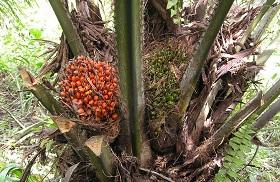Using AI to control energy for indoor agriculture
30 September 2024
Published online 11 August 2011

The oil palm Elaeis guineensis Jacq. produce the most oil of all plants, up to 90% of it's fruity mesocarp's dry weight is palm oil. Yet, a very close relative, the date palm, functions quite differently. Its metabolism builds-up mostly sugars in its fruits.
A team of researchers, including Noureddine Drira of the Faculty of Science of Sfax in Sfax, Tunisia, compared the changes taking place within oil palms and date palms during mesocarp development to determine the reason for the higher oil content in oil palms. They published their findings in the Proceedings of the National Academy of Sciences of the United States of America (PNAS).
Oil (triacylglycerol) is synthesized from sugars imported in the mesocarp. The researchers found that the high oil production in oil palms was related to much higher levels of different transcripts that code for all fatty acid synthesis enzymes and select enzymes of plastid glycolysis. Eighteen proteins made by the plant's plastid that are involved in converting pyruvate to fatty acids were found to be, on average, 13-fold higher in oil palms than in date palms. On the other hand, the enzymes responsible for triacyglycerol formation were expressed at similar levels in both types of palm.
This data suggests that the main transcriptional control for high oil synthesis in oil palm concerns a few enzymes leading to pyruvate synthesis and all enzymes that convert pyruvate to fatty acid, rather than triacylglycerol assembly enzymes.
The researchers suggest that these findings might pave the way to allow breeders to identify candidate genes to high oil content of oil palm fruits and help them to further improve breeding of elite genotypes.
doi:10.1038/nmiddleeast.2011.104
Stay connected: